Sleeping at a hotel in the centre of Guatemala City, I woke up early the next morning. When I say “early” I mean really early – at 6 am! And I was very well rested. But, 6 am is 6 am and in my regular life this is considered as very early. That’s why I closed my eyes and kept repeating in my mind: “Go to sleep, go to sleep... You are on holiday...” But, I just couldn’t. And then I realised that the evening before I turned off the light and went to sleep before 10 pm. In other words, I did sleep full eight hours and now I was felt quite well and rested. So, I decided to get up, but still without any real idea about what I would do at this time of the day.
Then I looked around me a little better. The hotel that I stayed at in Guatemala City used to be an exceptionally beautiful and lavishly built edifice. Once upon a time. Now, the structure was still there, but the years of regular maintenance were not, while the “curtains” in my room were made of unpicked jute sacks with imprints of “Cafe Do Brasil.” What I want to say is that although it was quite decently clean and the bed in it was very comfortable, the room itself was not inspiring enough for me to stay there for any longer than necessary.
As it would turn out, the decision to start moving this early in the morning has become one of the best life’s lessons I have ever learned. It is particularly applicable when one travels in the areas where it is very hot and/or where the crime rules at night and when it is dark, i.e., when it is not safe to be out in the streets when the Sun is not up in the sky. As I saw quite clearly as soon as I got out, there was absolutely nobody else around but me. And then it dawned on me: “The criminals do not work the first shift! Almost exclusively, they like to work the third, i.e., the night shift.” There is no way a criminal of any sort would wait until 6 or 7 in the morning to see if some crazy tourist would decide to go sightseeing at that particular hour. In other words, if one wants to see the things from the outside, this early in the morning is ideal – it is not too hot, it is not crowded and there are no criminals!
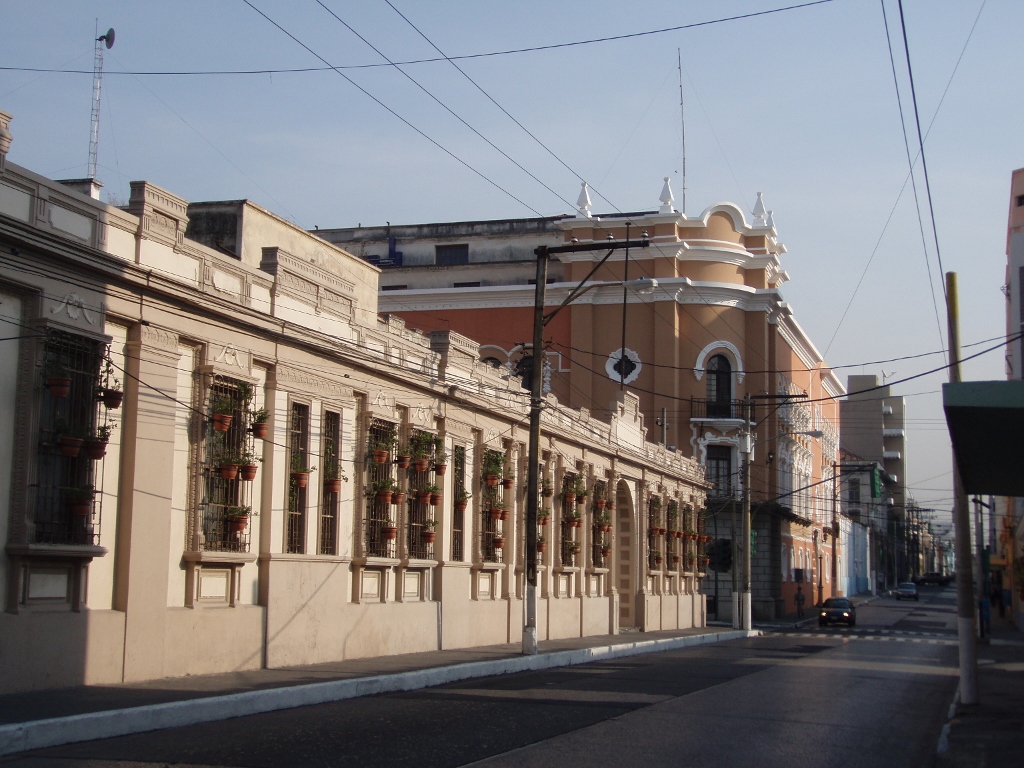 Streets of Guatemala City around 7 am
Streets of Guatemala City around 7 am
Although during the previous days of this journey I often had to get up early in order to go somewhere, from this day on I introduced this early rising with full awareness as a norm, even when I didn’t have to be in any hurry. Moreover, a couple of times when it happened that I stayed up until midnight, I would spontaneously wake up cheerfully at 6 am and several times I even woke up around 5 am since this was the time when it was dawning. And it was all perfect. Just as it should be.
This morning I headed for the central square in Guatemala City called the Constitution Square (Plaza de la Constitución), but along the way I passed by a very nice building and there I noticed one of the landmarks of the city and that was the Post Office Arch (Arco de Correos). This is an arch-bridge that connects two buildings that used to belong to the national Post Office and hence its name.
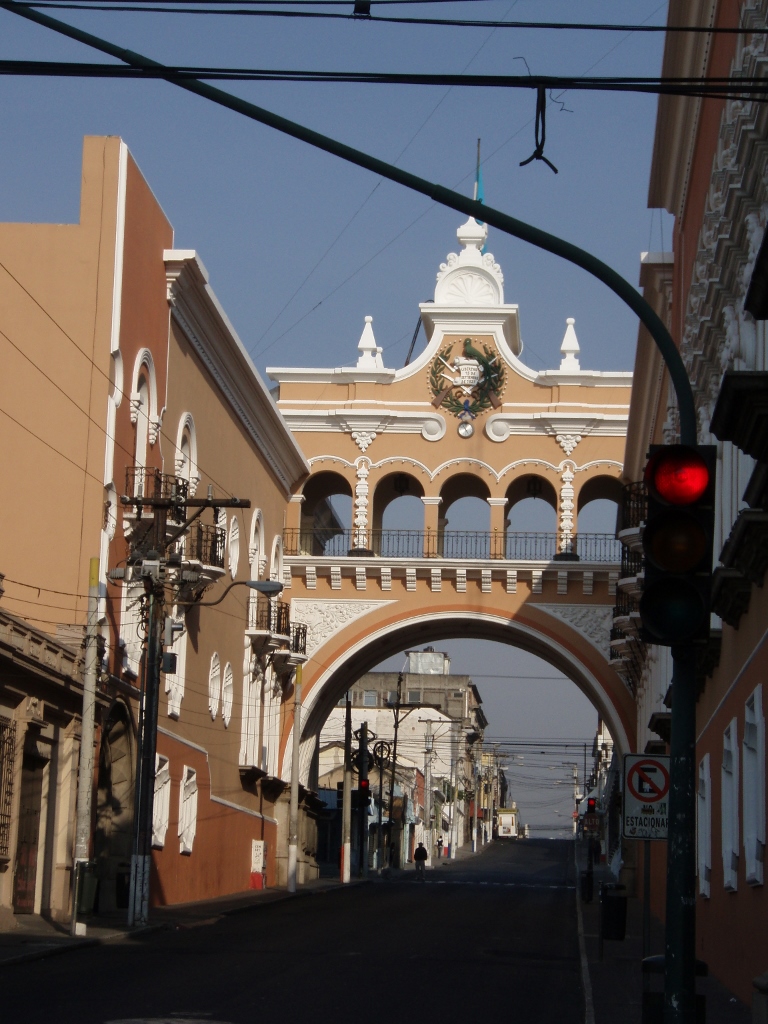 Post Office Arch
Post Office Arch
Some ten minutes on foot further I got to the Constitution Square and there I first looked at the Cathedral.
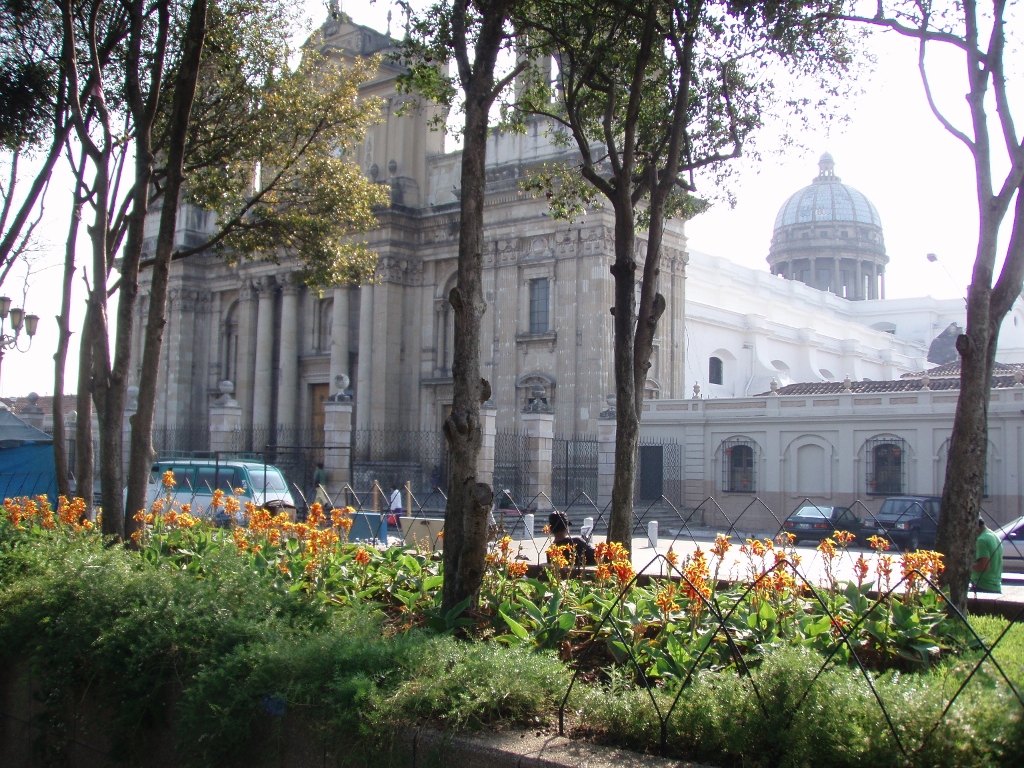 Cathedral in Guatemala City
Cathedral in Guatemala City
So, after the 1773 earthquake completely demolished Antigua which at the time was called St. James of the Knights of Guatemala (Santiago de los Caballeros de Guatemala) and which at that time was the capital of the Captaincy General of Guatemala, the capital was moved and on that occasion its name was finally changed into Guatemala City (Ciudad de Guatemala). This took place in 1776. Although there had been a settlement of the ancient Maya people here before, it is precisely this year that is taken as the year when the capital of Guatemala was founded.
By the way, I find the fact that Antigua was actually the third capital of Guatemala with the same name quite interesting. The first Santiago de los Caballeros de Guatemala, at the place of the present-day archaeological site of Iximché, was founded in 1524. Already in 1527, the capital with the same name, Santiago etc., was moved some 50 km farther and nowadays there is a town called Ciudad Vieja. Then we come to the present-day Antigua, 5.5 km farther still, which was declared the capital under the same name, Santiago etc., in 1543. And, so it remained until 1776.
Guatemala City is situated in a valley, but since this is all happening in the highlands in the southwest of the country, the valley is at the altitude of 1500 m and thus the climate is very pleasant here. One more of those places with “eternal spring.”
As for the Cathedral, its groundbreaking took place in 1782, while the construction was completed in 1871.
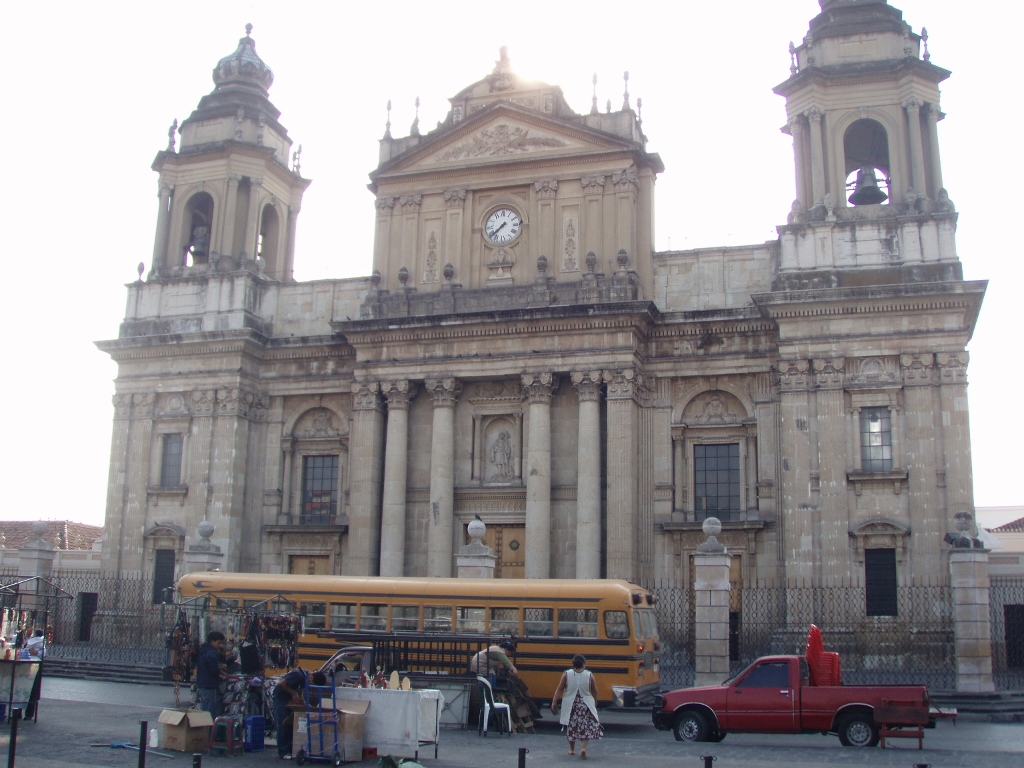 Cathedral in Guatemala City
Cathedral in Guatemala City
On the north side of the Constitution Square, which is also called the Central Park (Parque Central), while actually being the main square in the city, there is the National Palace (the full name: National Palace of Culture (Palacio Nacional de la Cultura)) and this is where the seat of the government and the president of Guatemala used to be. Nowadays, this is the seat of the Ministry of Culture, as well as a museum, so numerous exhibitions are organised within the building. I find it interesting that the main entrance into the National Palace is taken as kilometre zero for all motorways in Guatemala.
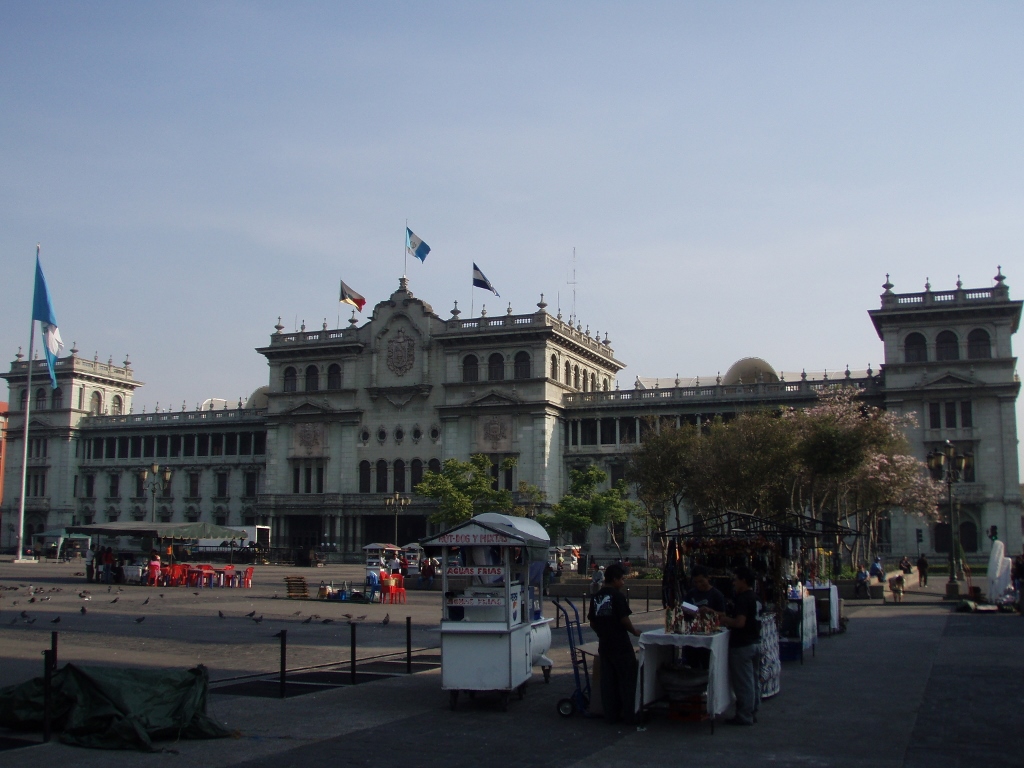 Constitution Square and the National Palace
Constitution Square and the National Palace
Although the streets were rather empty while I was walking towards the square, when I got here I came across a lot of busy people. They were all working around movable stands with food and kitchens/bars with a large number of chairs.
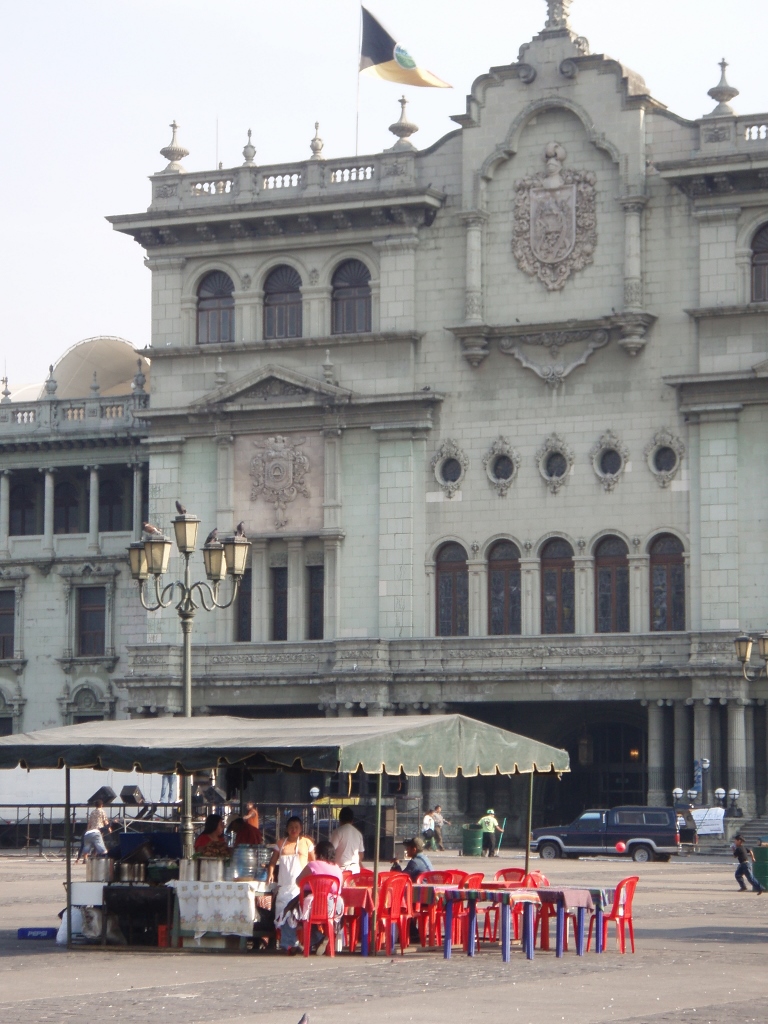 Improvised “restaurant” in front of the National Palace
Improvised “restaurant” in front of the National Palace
I was a bit confused, but as I would soon realise, it was 1 May, the International Workers’ Day which is celebrated here as a national holiday. A lot of people were congregating in Guatemala City on this day and it is precisely the Constitution Square, being the largest square in the country, that is used for different celebrations, festivities and parades.
I continued with my completely relaxed and superficial sightseeing of Guatemala City and so I went to the Central Market that is located right behind the Cathedral. First I passed through the section where fruits and vegetables were sold and so I bought a few bananas and a mango for later.
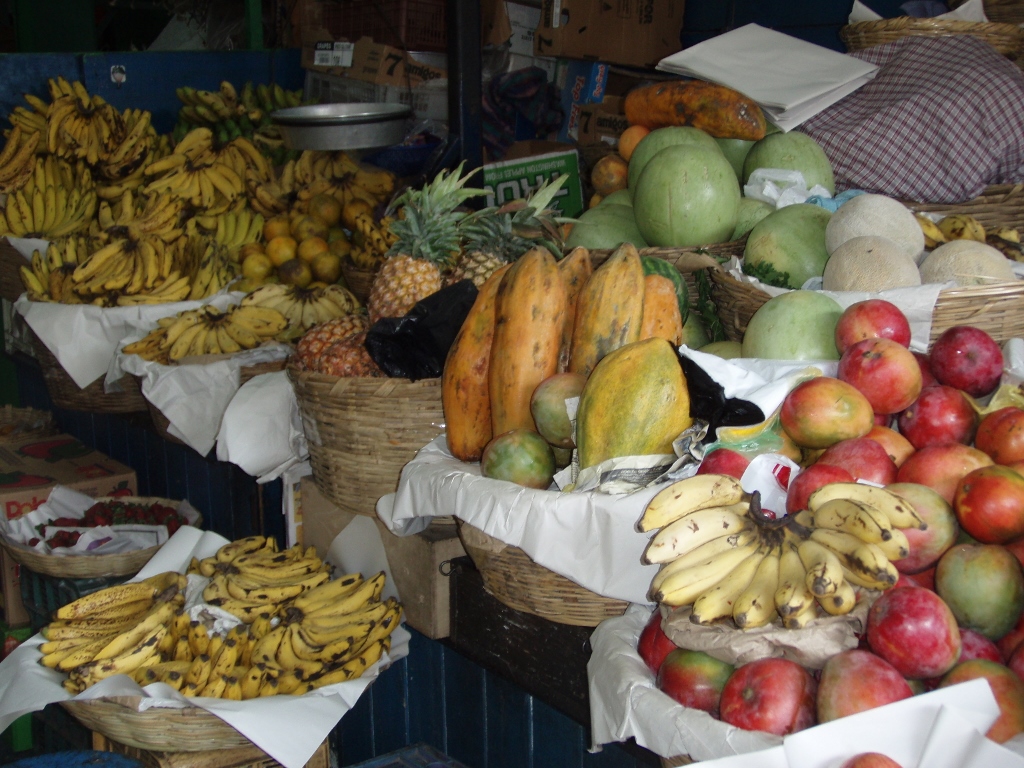 Detail from the Central Market
Detail from the Central Market
And then I got to a part of the market that is full of different eateries (comedores), typical local venues where there is a kitchen in the back, with tables or desks and benches or chairs in front for the guests to sit down, order what they will and eat it on the spot.
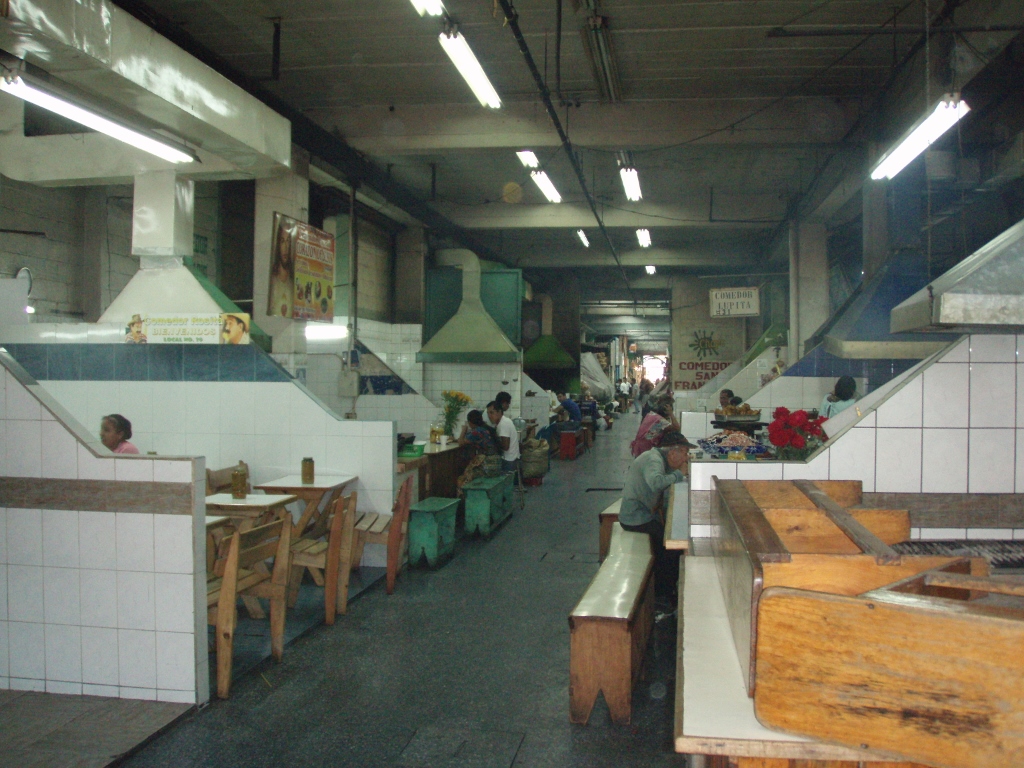 Restaurant section in the Central Market
Restaurant section in the Central Market
And so I sat on a bench of a comedor in order to have breakfast. Along the way, I chatted nicely with the two women who worked there.
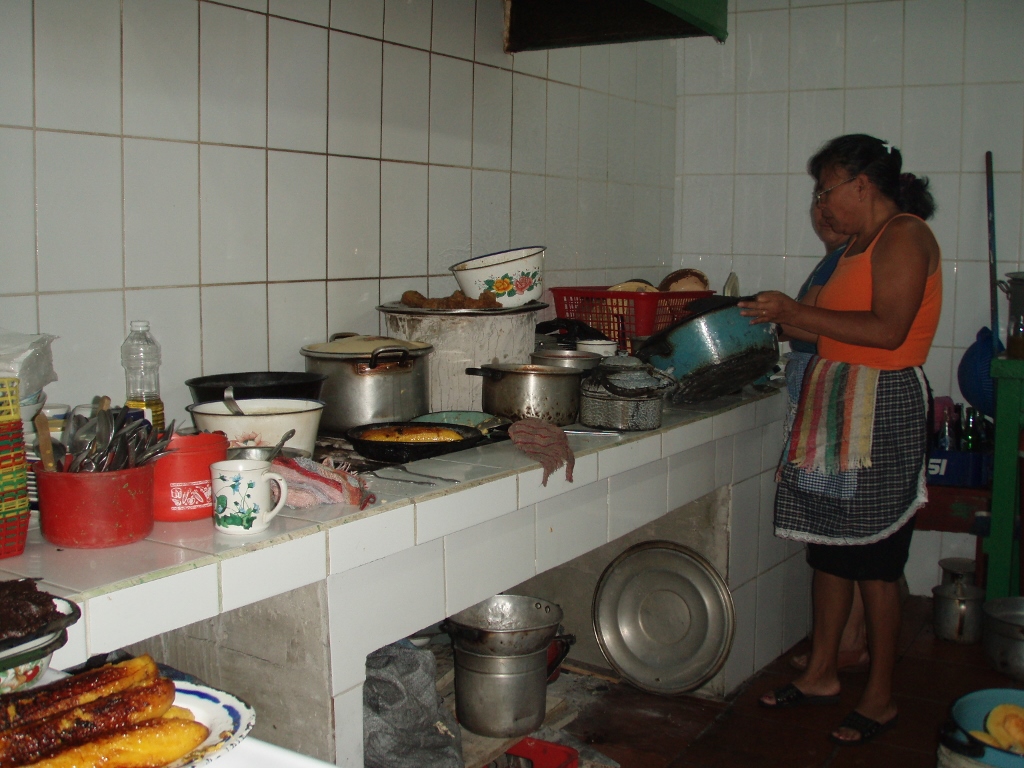 My breakfast is getting ready at the Central Market
My breakfast is getting ready at the Central Market
I ordered traditional breakfast (scrambled eggs and black bean purée), as well as fried banana and coffee.
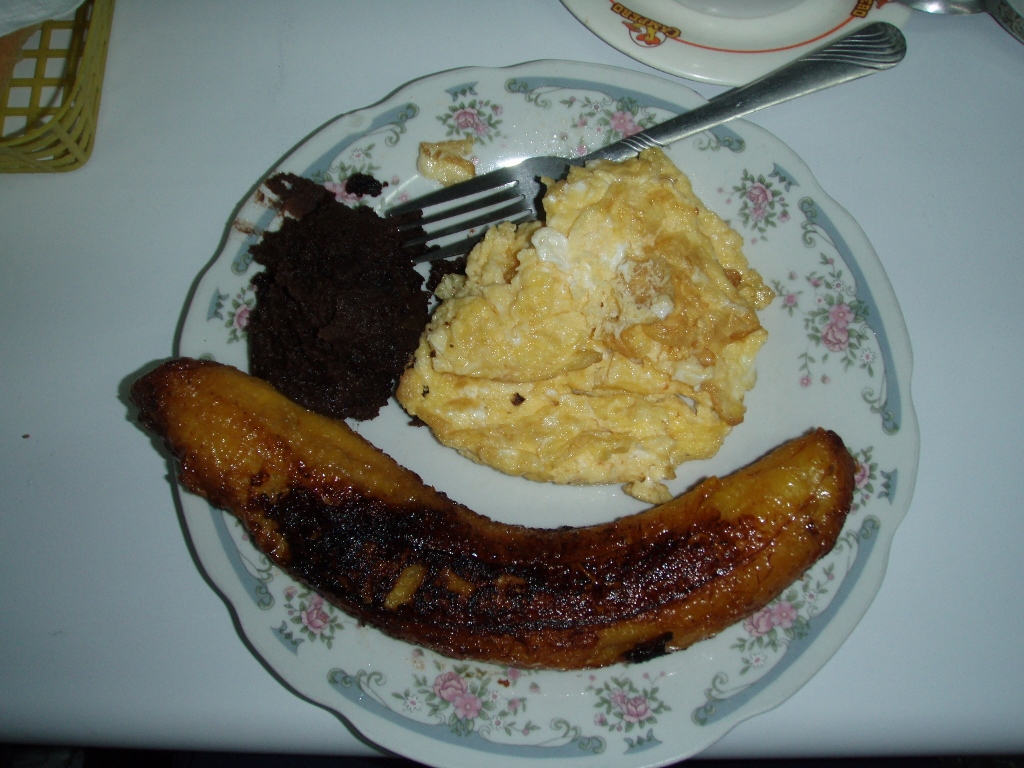 Breakfast at the Central Market
Breakfast at the Central Market
The entire breakfast was very tasty and I ate it all but a half of the banana which I could not finish since I was so nervous that my stomach did not function properly. The reason for this was that my plan was to leave Guatemala City for San Salvador, the capital of El Salvador, at 1 pm, but I still didn’t have the ticket for the coach and I was not sure I would manage to do that, which consequently made me very tense and nervous.
That’s why I got up after breakfast and went back to the hotel from where I called the transportation company to make sure their office was opened.
Namely, as opposed to the transportation within the country that is done by chicken buses, for moving between the countries in the Central America one can also use transportation in the shape of a regular modern coach, which entails more comfort and air-conditioning. I don’t know if there are different transportation companies of the kind, but I regularly used Tica Bus that had its own terminals and did not use the same terminals from which chicken buses operated.
So, when I got to the hotel and made a call from there, I got the basic information and then took a city bus in order to get to the coach terminal where I finally bought a ticket. What a relief!
Since the coach was leaving at 1 pm I had enough time and as I was relaxed now, I caught another city bus to get closer to the centre where I continued to walk around Guatemala City. Thus I got to St. Francis Church (Iglesia de San Francisco) that was on account of numerous earthquakes finished only around the middle of the 19th century although its construction started in 1780. The church was built in the neoclassical style, but I found it more interesting to take a photo of it from a side where I could not see its front facade, but I could see its dome.
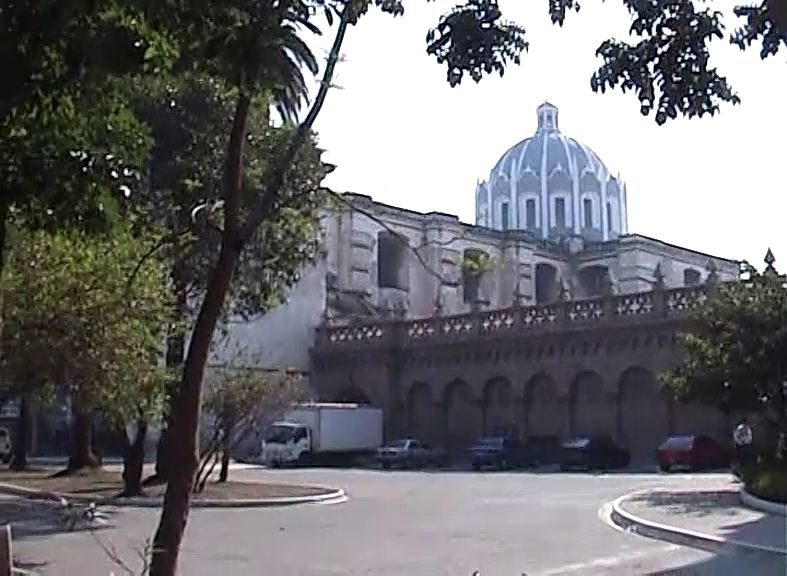 St. Francis Church
St. Francis Church
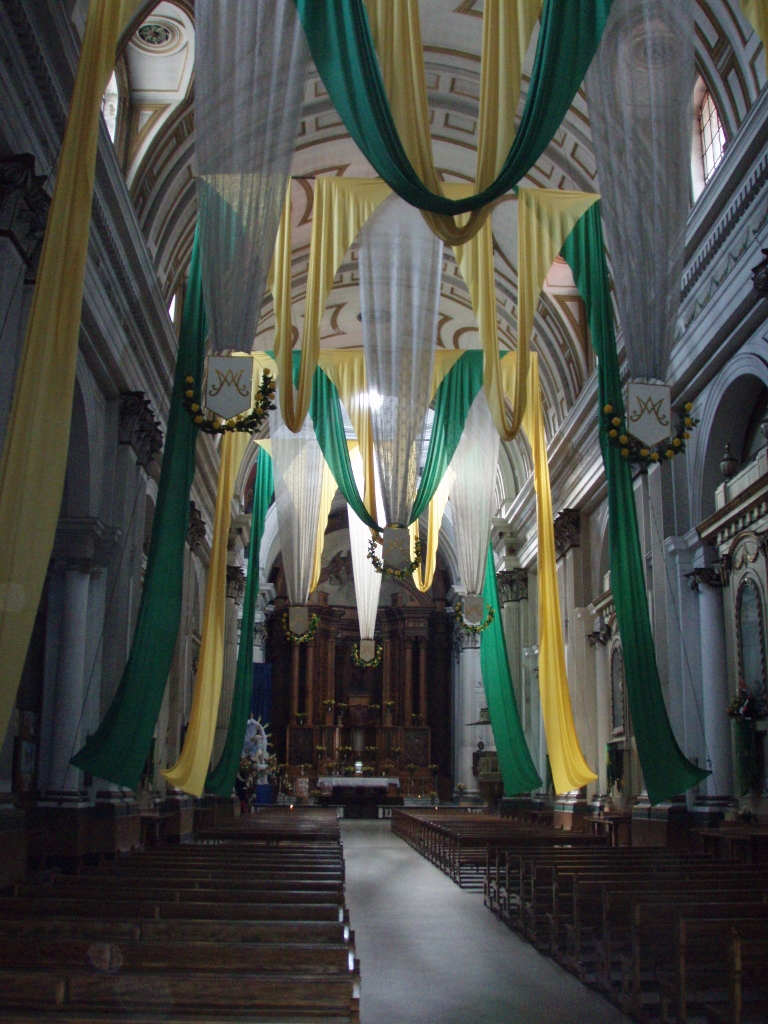 St. Francis Church, the interior
St. Francis Church, the interior
Right next to the church there is the Palace of the National Civil Police (Palacio de la Policía Nacional). This in itself is not unusual, since the edifice was built during the 1940’s in the place where in the past there was the monastery of St. Francis, but what is unusual is its appearance that is reminiscent of a medieval castle.
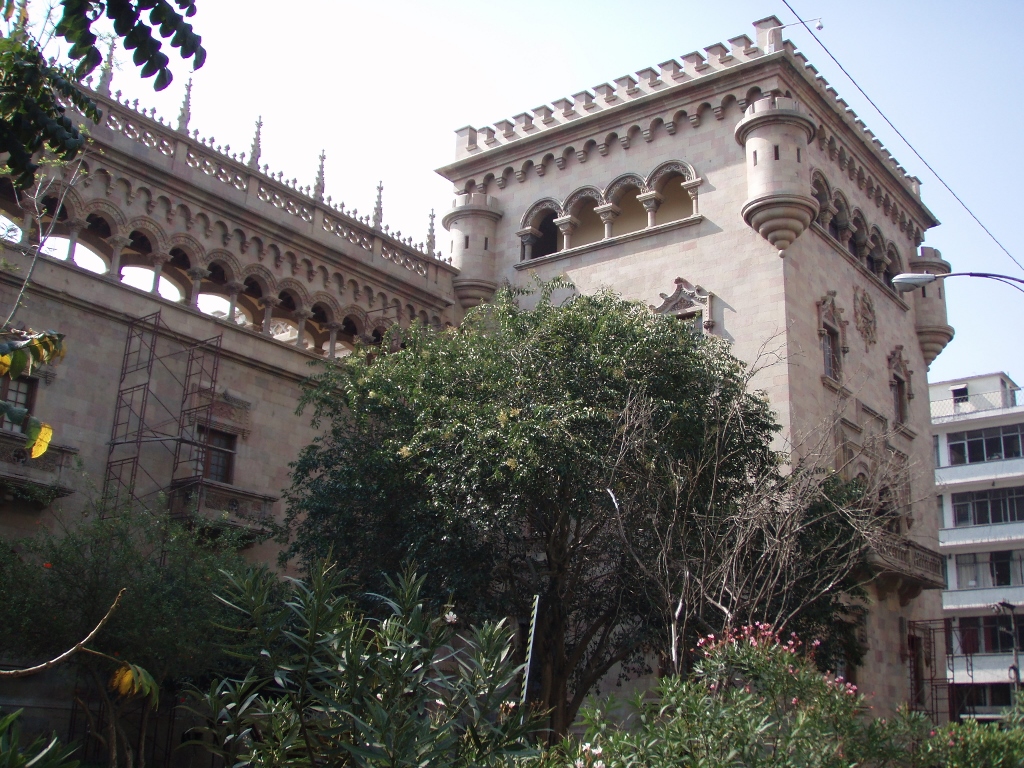 Palace of the National Civil Police
Palace of the National Civil Police
From here I continued walking practically going in the direction opposite of the centre, but apart from generally not caring where I was walking, I actually had a very specific church in mind. Before getting to it, I also looked at my surroundings I was passing through. I have already mentioned that I was not too impressed by Guatemala City, but I think that this was for a couple of reasons. The first one is that until now I spent most of my time in smaller towns and cities, visiting them or their surroundings and archaeological sites that are located there, and this was a big, modern city and thus not an equal competition to the impressive, although slightly tucked away places on my journey so far. Although I live in a big city (approximately twice the size of Guatemala City), on my travels, with very few exceptions, I don’t find the big cities I stay in too attractive; because of the size, crowds, noise and general chaos that seems to permeate them. An additional element here was that question of security. Although it was broad daylight and there was not the slightest danger at any moment, I guess I did have this aspect somewhere in the back of my mind and therefore I was a little less relaxed. The third reason was that I actually spent too little time in this city that according to the guidebooks has a lot to offer. However, my plans did not entail any longer stay in one place, particularly not in this phase of the journey.
So, I just continued with my stroll paying attention to the various sights I came across.
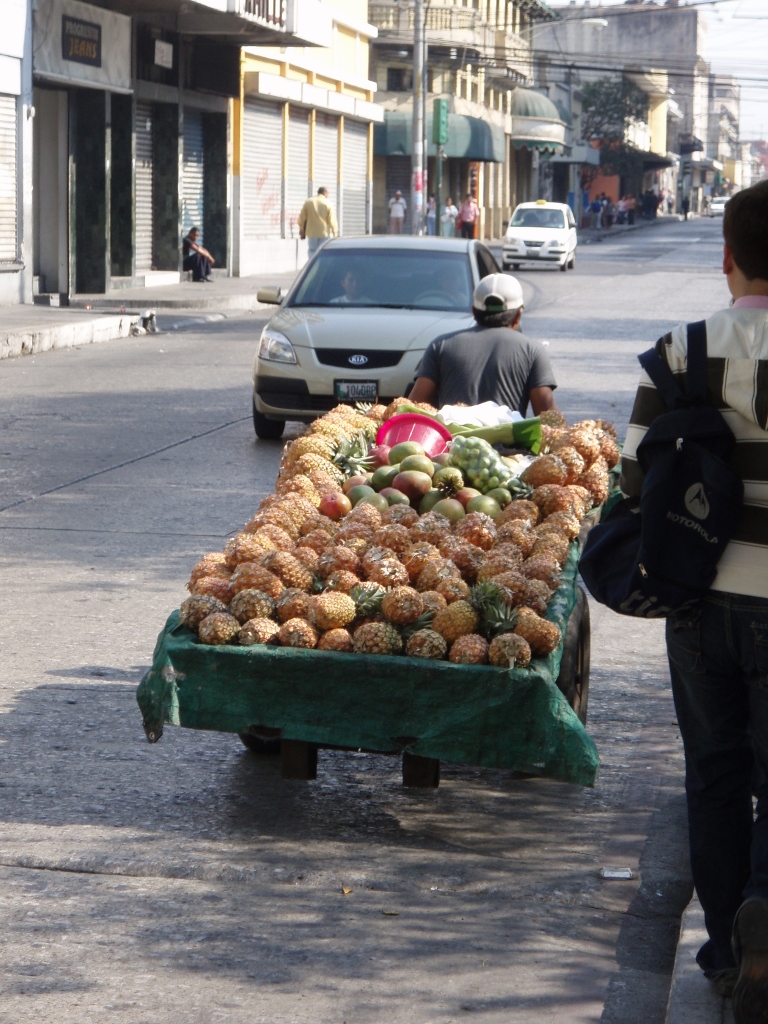 Transportation of pineapples in one avenue
Transportation of pineapples in one avenue
Since I’m dealing with fruits here, let me mention that regularly on this trip I came across vendors who were offering already pealed fruit, packed in small plastic bags, particularly mango that was in full season. This was the case here, too, where I also saw mobile fruit stands.
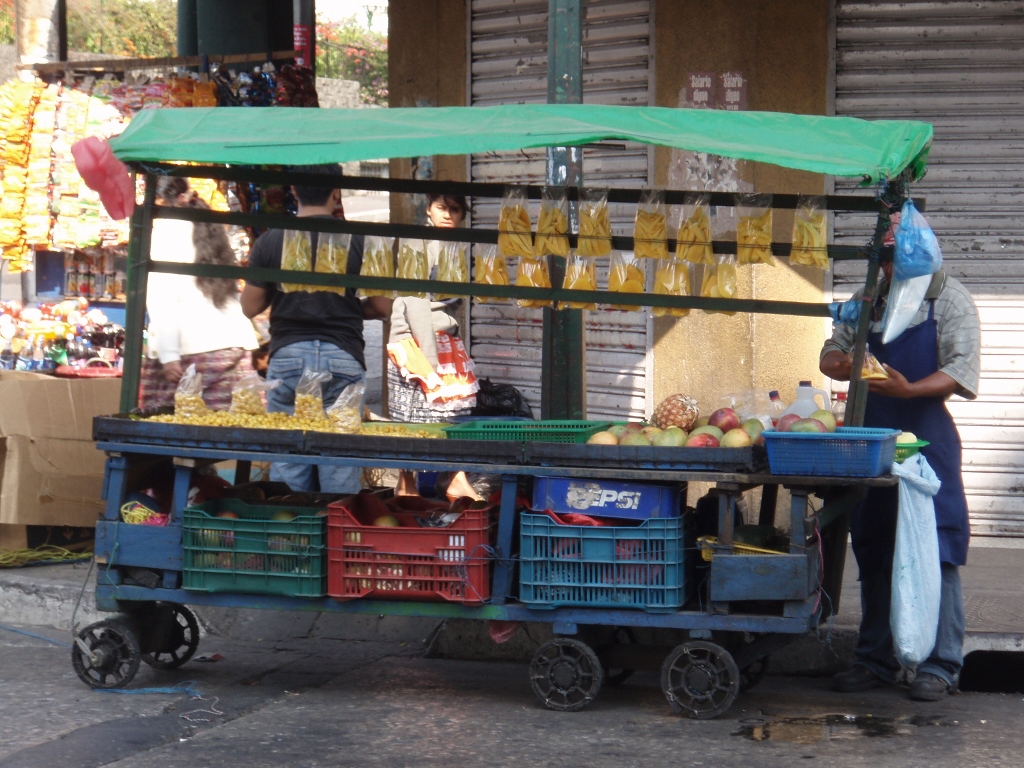 Ready-to-eat mango on display
Ready-to-eat mango on display
Then I came across a lovely place to sit, a type of a bench, decorated with picturesque ceramic tiles and details.
 Detail from the streets of Guatemala City
Detail from the streets of Guatemala City
This visually interesting and artistically made bench was a great overture for my main destination this time and that was the Church of Our Lady of Anguish (Iglesia de Nuestra Señora de las Angustias), much better known as the Yurrita Church (Iglesia Yurrita). The church got its other, more popular name after the Yurrita family who gave the money for its construction. The reason for such a move was to express their gratitude to the Holy Virgin whom they believed had protected them and saved them during the eruption of Santa María Volcano.
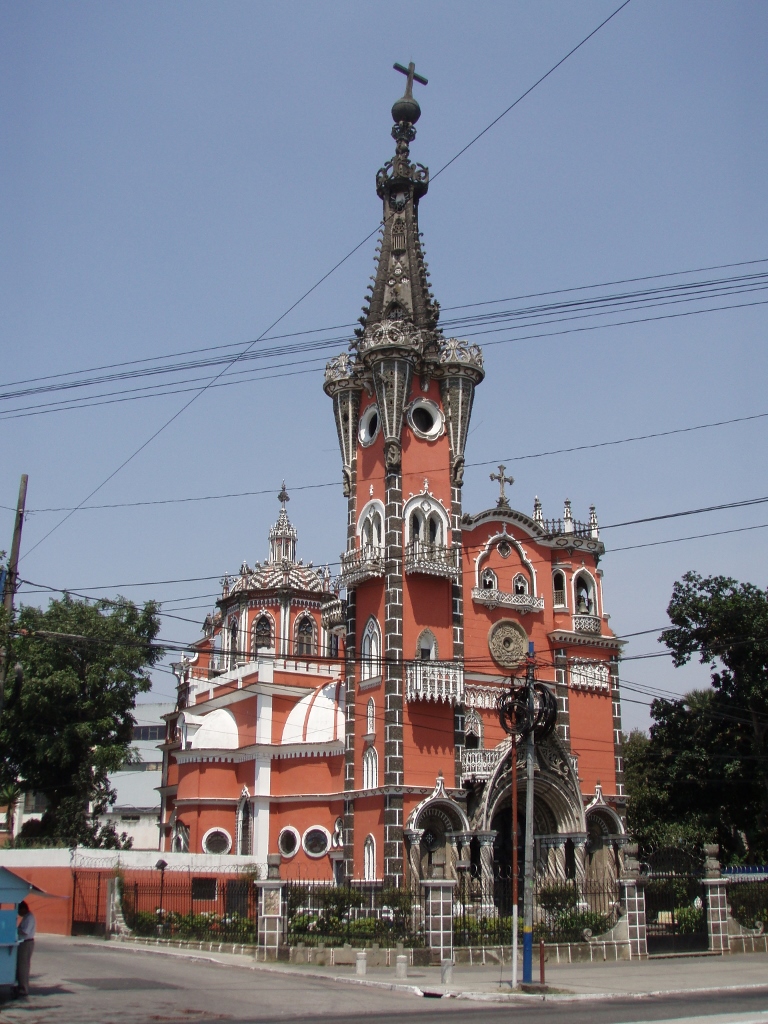 Yurrita Church
Yurrita Church
The church was built in the period from 1928 to 1941 and it combines the Art Nouveau, Neo-Gothic, Baroque, as well as Byzantine and Moorish styles.
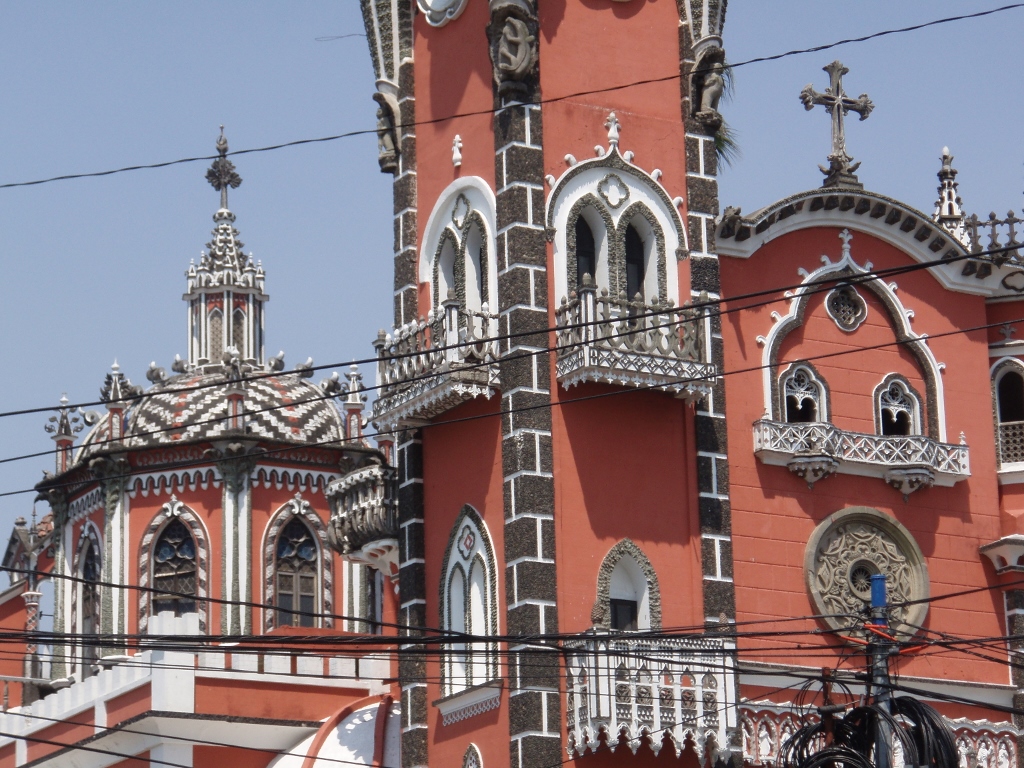 Myriad of details and styles on the Yurrita Church
Myriad of details and styles on the Yurrita Church
If you got an impression in the first photo that the cross on the top of the tower has a somewhat unusual position, your impression is quite correct, since the cross is definitely awry. It seems that nobody actually knows why, although it is certainly not the impact of the numerous earthquakes in this part of the world. Here is a view at the church from yet another angle where the mildly awry cross can be seen better.
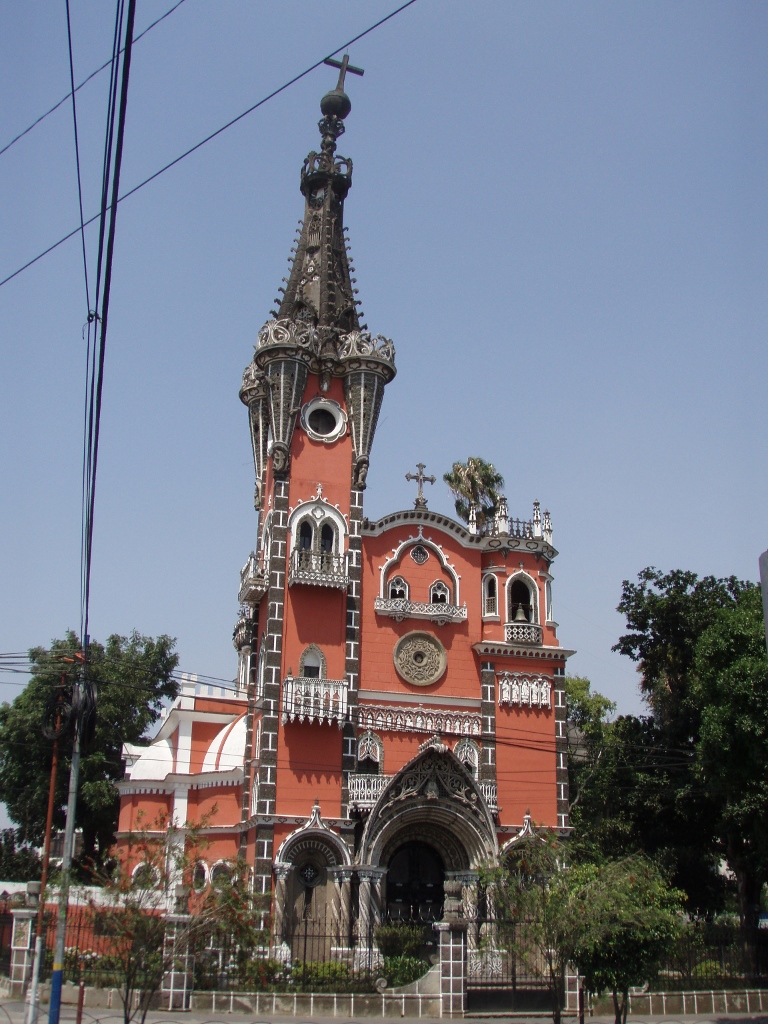 Yurrita Church
Yurrita Church
I crossed to the other side of the street, but the church was closed and all I could do was just to have another look at it from up close.
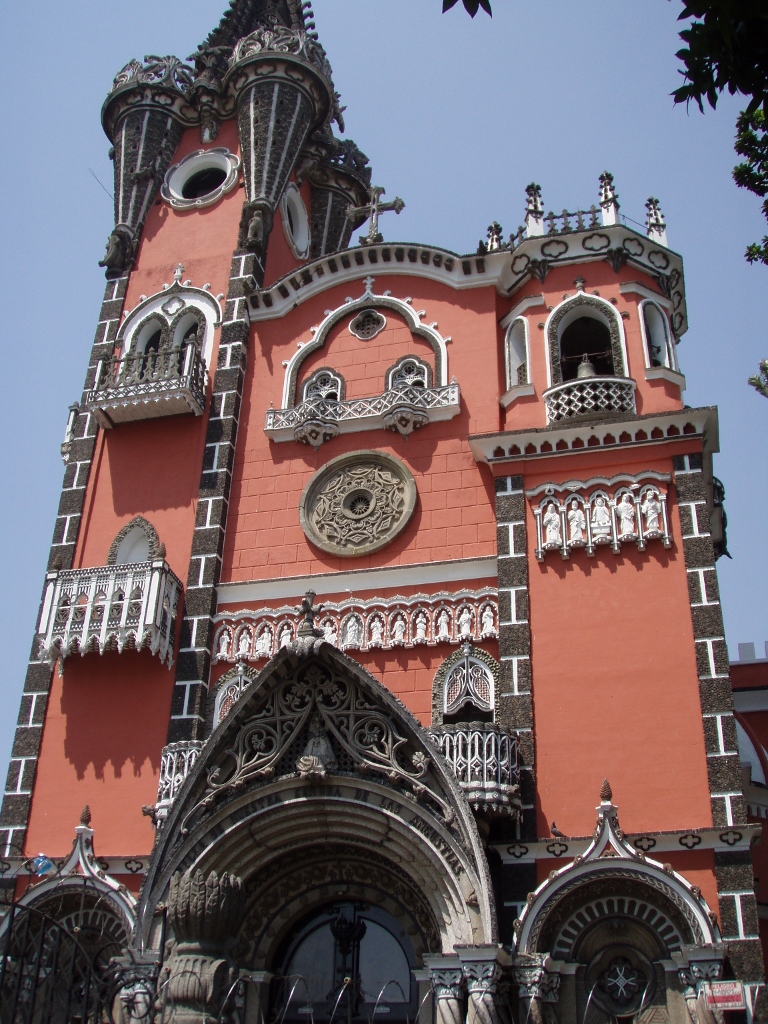 Yurrita Church
Yurrita Church
It is possible that the reason why the church was closed was that it was 1 May, the International Workers’ Day and there was a major celebration in the city. Walking back to my hotel, my route mostly coincided with the direction in which a large file of people moved.
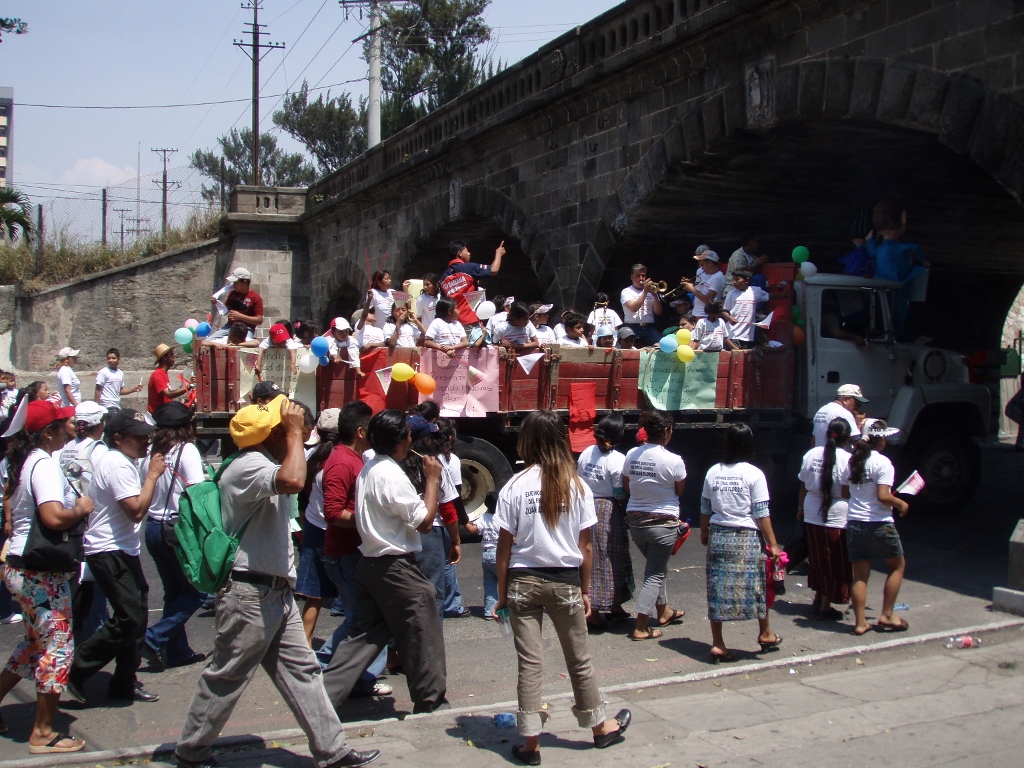 Celebration of 1 May in Guatemala
Celebration of 1 May in Guatemala
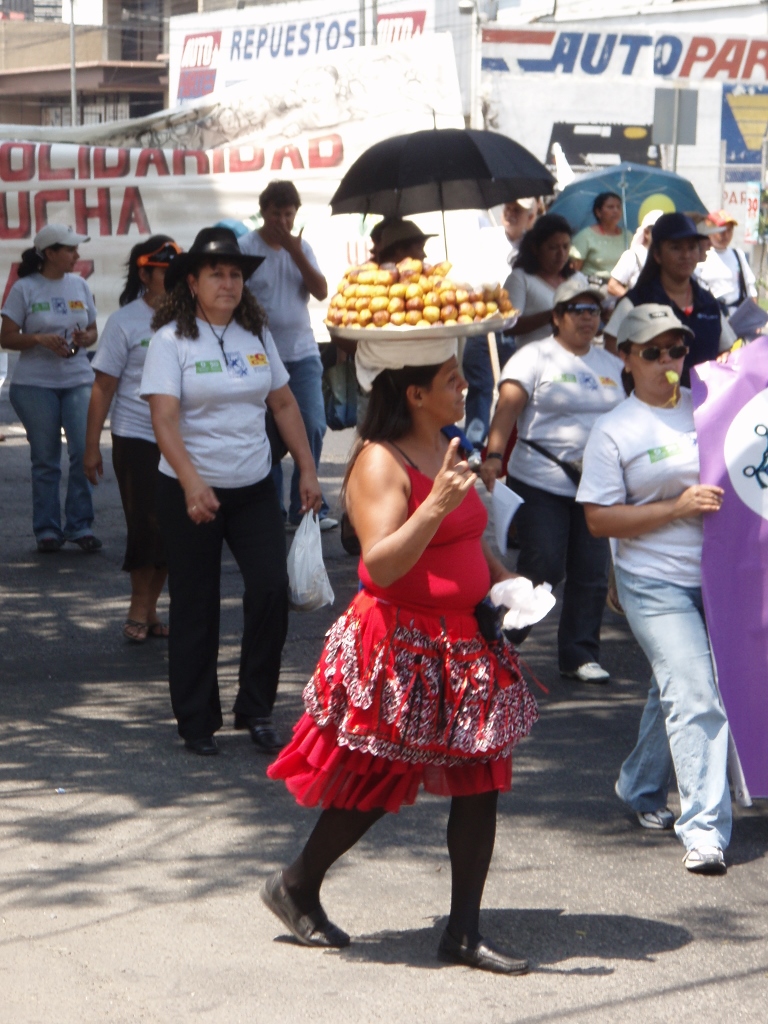 While some are celebrating, the others are working
While some are celebrating, the others are working
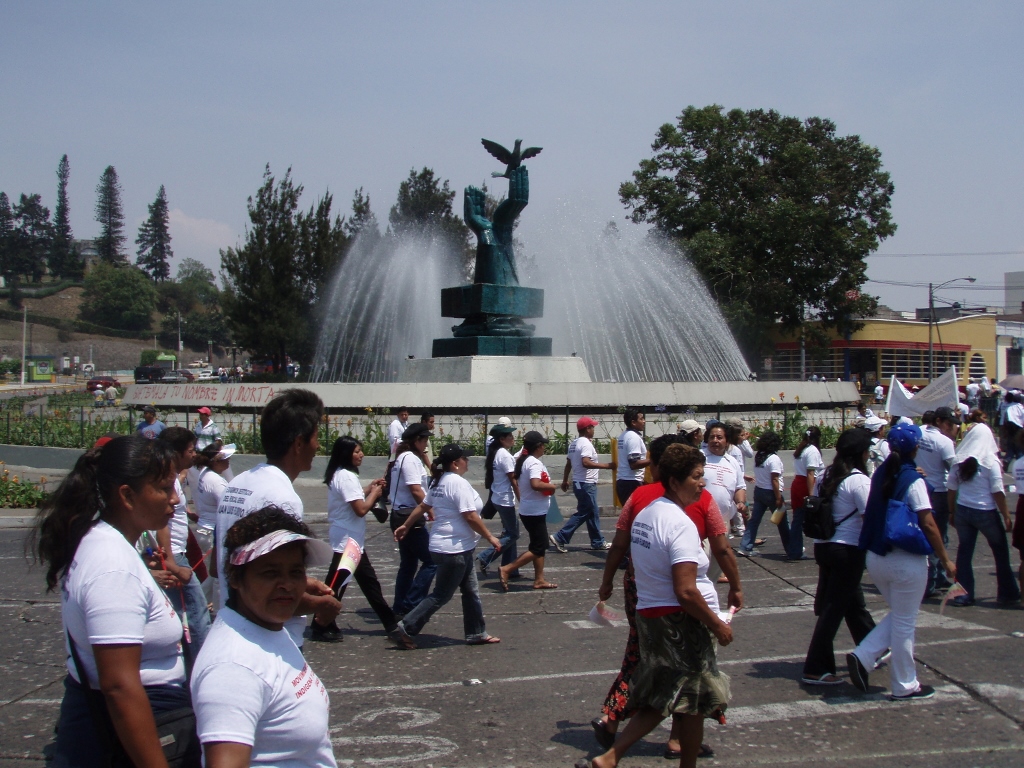 Celebration of 1 May in Guatemala
Celebration of 1 May in Guatemala
After a nice walk, I got back to my hotel, made some rough plans about the rest of my journey, checked my email and went up to my room where I ate the mango and the bananas I had bought earlier in the market. Then I took my things, paid the hotel bill, got into a taxi and went to the terminal of the coach covering the international line between Guatemala City and San Salvador.
Here is a reminder of my first passage through Guatemala.